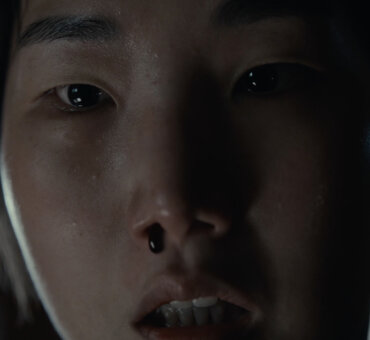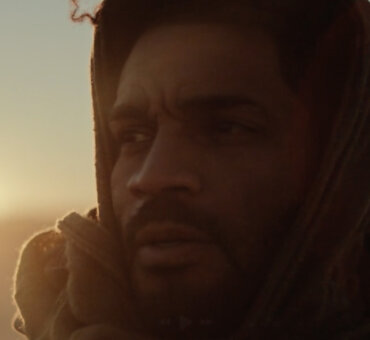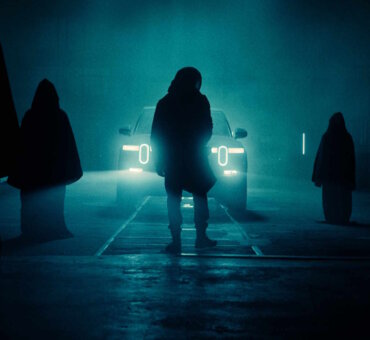There’s something about a great story that makes it evolve naturally, almost innately. Storytellers — in our case, filmmakers — know this more than most. When a great idea comes along, you let it drive the process, and Undercurrent, our latest Filmsupply Films, is a prime example of this. All director Patrick Fileti needed to inspire this film was two compelling images from the Syrian refugee crisis. This moment sparked a process that would eventually lead to a beautiful film — equal parts heartbreaking and hopeful, harrowing and inspiring. It’s a striking story that paints a picture of a crisis endured by millions worldwide. As Patrick pointed out, after speaking with dozens of immigrants, it was an idea that took on a life of its own:
“The visuals just started brewing inside of me once I started talking to the refugees,” he told us.
This moment of inspiration sparked a lengthy, arduous process: interviews with dozens of refugees, eight months of casting, Arabic lessons. But, as you’ll learn after hearing from Patrick, there was no stopping this idea once it was born. The story was far too important.
Here’s Patrick on the experiences that inspired Undercurrent, how he discovered the immigrant who portrayed the lead character, and why it’s so important to let go as a director and let passionate people do what they do best.
Filmsupply: When did the seed get planted for this film?
Patrick Fileti: In late 2015, there was a mass migration of persecuted Kurds because of the war in Syria. They were fleeing their home country and making their way to Europe, some via Africa to Sicily, and then the majority were crossing over to Turkey or Greece. There wasn’t a day when I didn’t see something about it on the news, and there were a few images that really impacted me: the photo of a young boy called Aylan Kurdi who drowned and washed up on the Greek shore and another of thousands of life jackets tossed into a huge pile. They just stuck with me and I felt like I needed to do something.
Instead of donating $50 to the Red Cross, I felt I could use my own skills to spread the message and advocate for the cause via powerful imagery, the same way those images left me speechless. I wanted to recreate those images so people were left feeling the same way. But, I didn’t feel like I had the background or the experience to actually write something that felt authentic, so I set out to interview refugees and hear from them first-hand.
There were immigrants coming to Australia as well?
At the time, there were still a lot of refugees crossing to Australia, many from Indonesia. But, during that year, Australia decided to put an embargo on any immigrant boats arriving. The boats that did come, they put them on one of two islands: Manus and Nauru. There’s been a lot of controversy in these places, with riots and reports of mistreatment and terrible malnutrition.
So, how did you get access for these interviews?
My first thought was, I’m going to go to these islands and interview them. But, just before I got ready to go over, a story broke out about how bad the conditions were and they stopped everyone from going there — especially people with a camera. Then, I decided to reach out to NGOs to see if they could put me in touch with refugees living in Australia, but it was extremely difficult because they wanted to protect their clients’ privacies and wouldn’t share any information with me. Finally, I got in touch with the Refugee Council and they put me in touch with a young refugee who was starting to get into film. I invited him on one of my music video shoots and he invited me into his community.
A friend of mine who’s a casting director also found a pro bono class at the University of Sydney where they’d teach English to refugees, and I ended up interviewing most of them. It took me over six months to get to that stage. I had to get access to the class, convince them to share their stories, and get them to trust me. I was overwhelmed by the amount of people who were willing to share. I found out there’s over 20,000 immigrants who are in Australia that haven’t been recognized as refugees. They’re in limbo, and already so vulnerable from what they’ve been through.
Was there a particular story that inspired Undercurrent?
Unfortunately, it’s quite a universal story. It’s extremely dangerous crossing from Indonesia to Australia. Throughout the world in 2016, over 350,000 refugees attempted sea crossings and more than 7,500 didn’t make it. By the time they’d reach anywhere near Australia, they were extremely scared and extremely malnourished. There were cyclones, boats capsizing, people drowning— so, there were a lot of similar stories. All of them hit me hard.
There was one particular interview. A father was talking about his daughter and how afraid he was for her, taking her across the ocean on this boat. He told me, “If something were to happen to her, I don’t know what I would’ve done.” She was young, and didn’t know exactly what was going on, but there was something about the way he talked about her, about how scared he felt taking her on this terrible journey, but had no choice. In his mind, he was either going to do this or die, because there was no going back. The extremes he was pushed to, knowing the risk in taking his daughter on a dingy across the ocean to an unknown land, moved me to tears. I like to make films about relationships, so that interview really stuck with me.
With all of these compelling stories, why did you decide to do a narrative piece?
I’m a very visual person, and I felt like it would be more powerful for me to capture a real moment. Not over-glorify it. Not overwrite it. The strongest thought that came to me was purely a moment that this entire story revolves around. It wasn’t a narrative in the sense that it has a beginning, middle, and end. It was to explore a moment in time through cinematic language. The visuals just started brewing inside of me once I started talking to the refugees.
There have been a lot of documentaries done, and I feel like they’re sometimes limiting. Undercurrent was more about painting a picture of these stories that people told me — I didn’t necessarily want to recreate them. It’s fusing documentary with narrative, in a way The key visuals and story outline presented themselves through the highly emotional interviews and I instantly knew what I had to shoot.
How did you find a lead actress talented enough to translate these stories?
It was extremely hard. I was working with some of the best casting directors in Australia and New Zealand, and many of the girls that auditioned didn’t have the maturity or quality of emotion that was essential to portray someone who’d been through something like that. We cast for six months, and I didn’t want to start production until we found the right person. Eventually Rebecca, a South African teenager came in for the part. She’d just immigrated to New Zealand and someone close to her had just passed away, so she was dealing with those emotions herself, which really raised the stakes. She just blew us away.
She didn’t have much acting experience, but she had the presence, power, and intensity required. If we couldn’t find someone Arabic for the role, we opened it up to the right person who could convey the emotions — which was more important in my mind. She was 13 at the time, and just had a soul older than her years. Rebecca then threw herself into the character and even spent three months learning Arabic, specifically the Syrian dialect from a woman in Damascus.
We read your father was a theater director and you studied theater in university. Did that affect how you approached the acting process?
Yeah. One thing I love about theater is the instant moments. It’s not something you can recreate. So, I guess from that side of my background, I try not to interfere with a performance. It’s so important when working with non-actors — which I love to do. You really don’t have that much control over them, because the more you inform them, the more nervous they get. It’s about creating a comfortable environment for them to just be themselves, because that’s why you cast them. That’s the process I used for Undercurrent, where it’s a very real scenario and the context is quite sensitive. It was about creating the right environment for the actress to live the role, instead of trying to act it out.
Even in commercial work, it’s my job to create that, the right atmosphere and the right location. Make it a comfortable environment for people to explore their own human emotions through film. At the end of the day, actors or non-actors can only relate to what they know and what they’ve experienced.
Does that make for a different on-set experience?
I do a lot of the hard yard beforehand with rehearsals and training, so then I can leave some space for improv on-set. I do that with the camera too. I try not to storyboard too much and control too much, so I can just let the scene unfold. When I feel like it’s ready, we stop. A lot of that process comes from pre-production, and I tend to have guidelines with a script and with what I have drawn out in my mind. I like to work in quite an intuitive way, so it feels real and the actor maintains the thrill of expressing new feelings. As a director, you’re basically a coach more than anything, and you need to let people shine. Let people own the work. You can only do that by giving them the freedom to bring their own passion to the project. Their own reasons for taking it on.
How about you? What’s your reason for taking on this project?
I felt like this is a story worth telling. What better story to tell than one that has an impact on people or a story that can change people’s minds? A lot of people don’t know what’s going on, or don’t want to know. I’m a passionate filmmaker and I just became really passionate about telling this story. Once I interviewed those refugees, there was no stopping.
To learn more about how you can help support the refugee cause, visit:
- Australia https://www.refugeecouncil.org.au/
- UK https://www.refugeecouncil.org.uk/
- USA http://www.rcusa.org/
To watch more incredible short films from Filmsupply Filmmaker, and to license the footage, head over to filmsupply.com/films.






